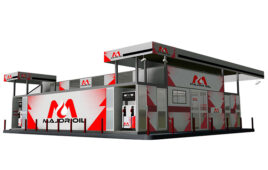 Instead of worrying how meal kit delivery services may harm their businesses, many grocers and food marketers are devising their own delivery services.
Instead of worrying how meal kit delivery services may harm their businesses, many grocers and food marketers are devising their own delivery services.
While there has been some question lately about the success of meal kit delivery services, new research from Packaged Facts has revealed that these services have been met with considerable success since their introduction in 2012.
Meant to solve the perennial problem of “what’s for dinner?,” the services offer people a convenient way to cook at home without having to do the meal planning and grocery shopping. Online portals let consumers order meals ahead from picture menus showing beautiful photos of each finished dish, and the services deliver the pre-measured fresh ingredients along with recipes to their doorstep to help them cook chef-like meals at home. They are aiming for—and finding—a “sweet spot” with consumers who do not have the time, inclination, or know-how to shop for individual ingredients, find a recipe, and cook from scratch, yet do not want to eat yet another heat-and-eat prepared meal, order takeout food, or dine out.
Led by Blue Apron, HelloFresh and Plated, more than 150 meal delivery kit services are now vying for this business in the U.S., whether on a national, regional or local basis. Over the past few years, meal kit delivery service startups have collectively raised more than more than $650 million in venture capital. Most meal kit delivery services target young professionals and busy families with children, especially millennial urbanites. Freshness is a huge selling point: these services claim their ingredients are fresher than those consumers can buy in grocery stores. Other major selling points of many kits are that they teach consumers cooking skills, help broaden taste buds, and make exotic ingredients available everywhere. Marketers also play up meal kits as being something fun to do and bringing people together. Critics of meal kits say they are “like paint-by-numbers,” too expensive for most people, with an average cost of $10 to $15 per person per meal, and—by far the most common criticism—use too much packaging, much of which is environmentally unsound.
Meal kit delivery services have the potential to disrupt both the restaurant industry and the grocery industry because they allow people to cook restaurant-quality meals at home without going out to grocery shop. Rather than worrying whether meal kit delivery services will cut into their business, some grocers and food marketers are starting their own such services.




